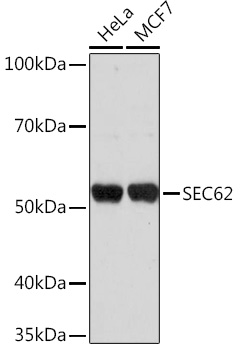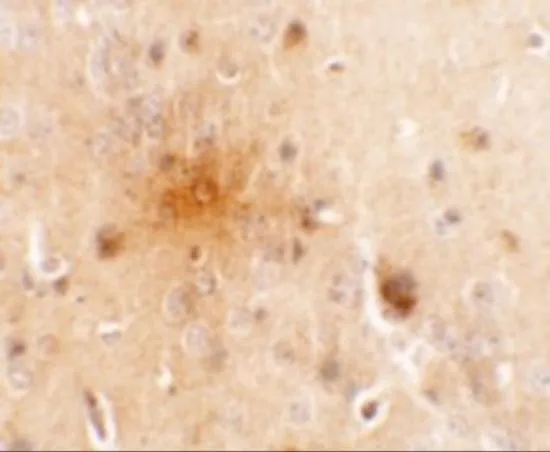Sec62 antibody
GTX129853
Overview
- SupplierGeneTex
- Product NameSec62 antibody
- Delivery Days Customer9
- Application Supplier NoteWB: 1:500-1:3000. *Optimal dilutions/concentrations should be determined by the researcher.Not tested in other applications.
- ApplicationsWestern Blot
- CertificationResearch Use Only
- ClonalityPolyclonal
- Concentration1.07 mg/ml
- ConjugateUnconjugated
- Gene ID7095
- Target nameSEC62
- Target descriptionSEC62 homolog, preprotein translocation factor
- Target synonymsDtrp1; HTP1; hTP-1; membrane protein SEC62, S.cerevisiae, homolog of; SEC62 preprotein translocation factor; TLOC1; TP-1; translocation protein 1; translocation protein SEC62
- HostRabbit
- IsotypeIgG
- Protein IDQ99442
- Protein NameTranslocation protein SEC62
- Scientific DescriptionThe Sec61 complex is the central component of the protein translocation apparatus of the endoplasmic reticulum (ER) membrane. The protein encoded by this gene and SEC63 protein are found to be associated with ribosome-free SEC61 complex. It is speculated that Sec61-Sec62-Sec63 may perform post-translational protein translocation into the ER. The Sec61-Sec62-Sec63 complex might also perform the backward transport of ER proteins that are subject to the ubiquitin-proteasome-dependent degradation pathway. The encoded protein is an integral membrane protein located in the rough ER. [provided by RefSeq]
- Storage Instruction-20°C or -80°C,2°C to 8°C
- UNSPSC12352203







